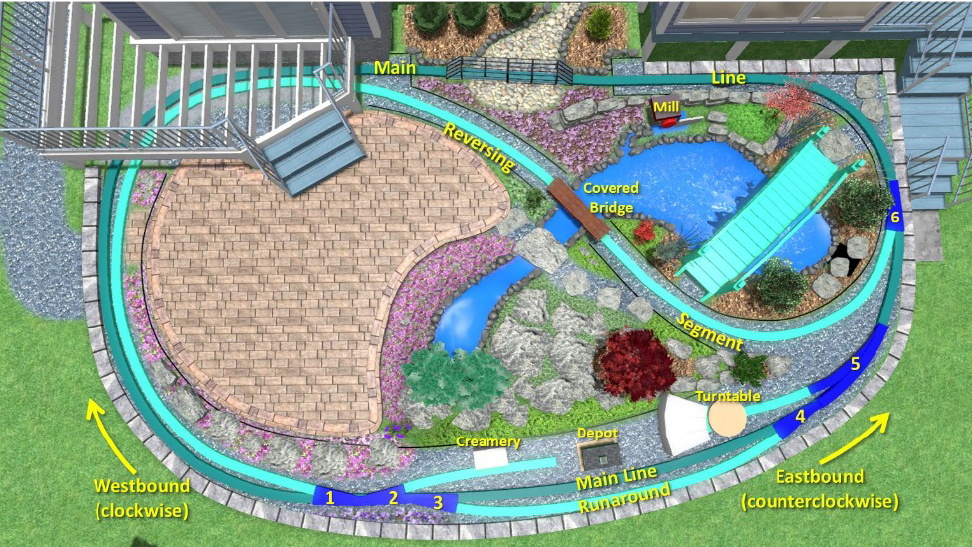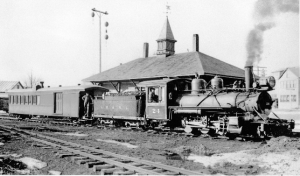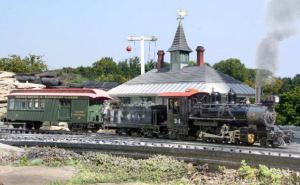Fearrington Light Railway
The Route of the Beltie

The Fearrington Light Railway (FLR) is a freelanced subdivision of the Sandy River and Rangeley Lakes Railroad (SR&RL), an actual 2-foot narrow gauge railroad that operated in northern Maine from the 1880s to 1935. The time period depicted on the FLR is circa 1931. In this schematic drawing, the floor boards have been omitted from the grilling deck (upper left), to show the tracks passing underneath.
We moved into our new home in December of 2016. Work on the railroad began in June of 2017. Paige Moody of built the patio, water feature, and major landscaping. David Mozier of Mozier Builders constructed the grilling deck and the two sets of stairs. Both did a terrific job bringing my design sketches to life. I laid the first loop of track in the fall of 2017. The structures came from my previous garden railroad in PA. All except the steel truss bridge and the wooden turntable bridge were scratch-built by me, based on New England prototypes. They are weatherproof, and remain outdoors year round. I also assembled the full-size foot bridge, from a kit.


Left: Strong, Maine on the SR&RL, circa 1930. Right: Fearrington Junction on the FLR.
The track is brass, and is supported by gravel ballast, just as on the prototype. All switches are manually operated, also as on the prototype. The engines are radio controlled, and powered by battery or live steam. The steam locomotives burn camp stove fuel (butane/isobutane). Track gauge (the distance between the rails) is 45 mm, aka “Gauge 1.” The scale (ratio between the model and prototype) ranges from 1:24 (1/2” to the foot) to 1:13.7 (7/8” to the foot). For comparison, O scale trains (e.g. Lionel) are 1:48 (¼” to the foot). Plants adjacent to tracks are selected to be “in scale” with the railroad as well, with tiny leaves or needles and overall size, such as creeping juniper, dwarf cedar, and dwarf boxwood, and groundcovers such as sedum, phlox, Scotch moss, and various thymes.
Projects like this are never “finished.” There are always gardening chores to attend to, and I have a list of structures and rolling stock to build, details to add, etc. That said, I have designed the railroad to be as low-maintenance as possible, so that I can enjoy it for as long as possible. I hope you enjoy it as well!






